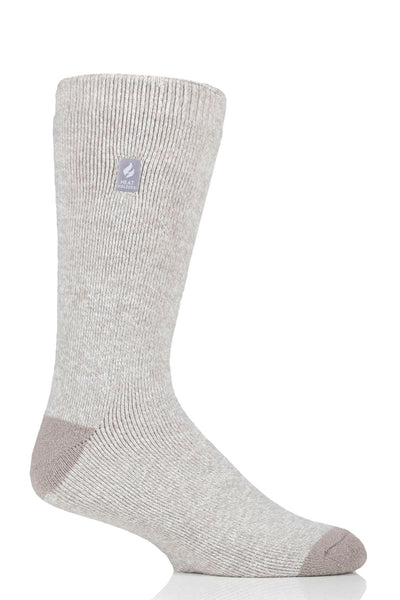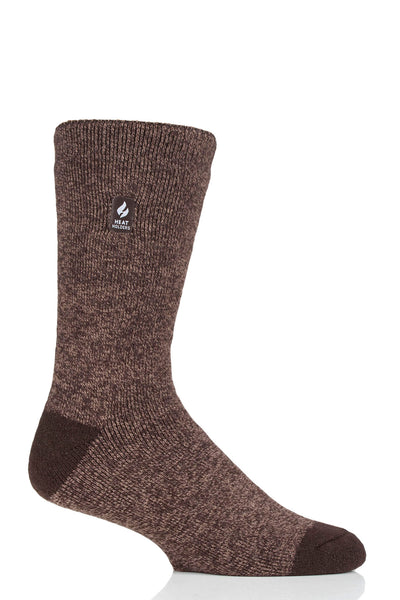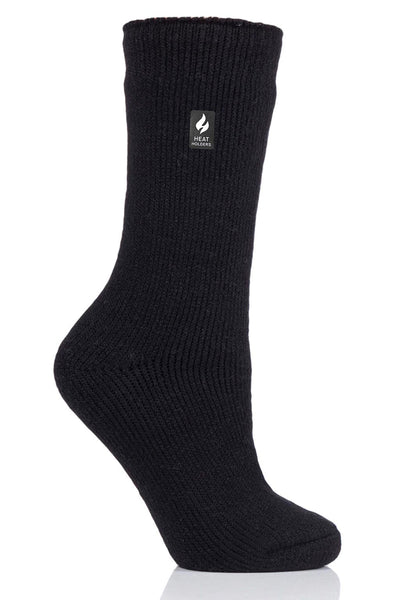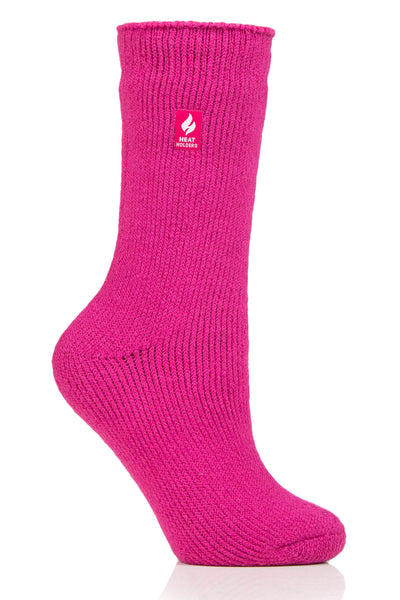When it comes to comfort and functionality in footwear, the choice of socks is often overlooked. Midweight socks bridge the gap between lightweight and heavyweight options, making them versatile for various activities and conditions. Selecting the right fabric for midweight socks can significantly impact your overall experience, whether you're hiking, commuting, or just relaxing at home.
Understanding the Importance of Midweight Socks
Midweight socks are ideal for transitional weather and provide an excellent balance of warmth and breathability. They are neither too thick nor too thin, making them suitable for a wide range of footwear. Understanding their importance involves looking at how they contribute to comfort and performance.
The Role of Midweight Socks in Foot Comfort
Foot comfort starts with proper insulation and moisture control. Midweight socks are designed to keep your feet warm during cooler temperatures without overheating. They play a key role in preventing blisters and chafing, particularly during physical activities.
Moreover, the cushion provided by midweight socks can alleviate pressure points on your feet, enhancing overall comfort. Choosing the right sock can make all the difference, especially during extended wear. This is particularly important for athletes or those who spend long hours on their feet, as the right midweight sock can help maintain foot health and performance. The added padding in the heel and toe areas can absorb shock, reducing fatigue and allowing for longer, more enjoyable activities.
Why Material Matters in Midweight Socks
The material of midweight socks is crucial for several reasons, including breathability, durability, and feel. While some materials excel in specific areas, the right blend can offer comprehensive benefits.
Understanding the characteristics of different fabrics will help you determine which ones align with your needs, making your sock selection smarter and more effective. For instance, Merino wool is a popular choice for midweight socks due to its natural moisture-wicking properties and temperature regulation, keeping feet dry and comfortable in varying conditions. Synthetic blends, on the other hand, can enhance durability and quick-drying capabilities, making them ideal for outdoor adventures. Additionally, the blend of materials can impact the sock's elasticity and fit, ensuring they stay in place without slipping or bunching during wear. This combination of comfort, performance, and durability makes midweight socks a staple in any wardrobe, especially for those who lead an active lifestyle.
Exploring Different Materials for Midweight Socks
Various materials are used to manufacture midweight socks, each offering unique benefits. The most common materials include wool and synthetic blends. Let’s delve into each type to understand how they measure up in terms of comfort and functionality.
Wool: A Warm and Durable Option
Wool is renowned for its exceptional insulating properties, making it a popular choice for midweight socks. Natural wool fibers are moisture-wicking, which means they keep your feet dry and warm even in cold conditions. Furthermore, wool's natural elasticity ensures a good fit without sagging.
Another advantage of wool is its durability. High-quality wool socks can withstand a lot of wear and tear, maintaining their shape and function over time. However, some may find wool socks too warm for mild weather, limiting their usability to colder climates. It's worth noting that modern advancements have led to the development of Merino wool, which is finer and softer than traditional wool, providing the same warmth without the itchiness often associated with wool products. This makes Merino wool socks a versatile option that can be worn comfortably in a variety of conditions, from hiking in the mountains to lounging at home.
Synthetic Materials: The Modern Approach to Midweight Socks

Synthetic materials, such as polyester, nylon, and spandex, have revolutionized the sock industry. These materials offer excellent moisture wicking, breathability, and durability, often outperforming natural fibers in specific conditions.
Additionally, synthetic socks tend to dry faster than wool, making them ideal for athletic activities or warm climates. They also come with added stretchability, ensuring a snug fit that moves with you. However, some users may find synthetic materials less comfortable due to their often less natural feel compared to wool. To address this, many manufacturers blend synthetic fibers with natural materials, creating hybrid socks that combine the best of both worlds. These blends can enhance performance while retaining comfort, making them suitable for a wide range of activities, from running to casual wear. Moreover, advancements in technology have led to the development of odor-resistant synthetic fibers, ensuring that your socks stay fresh even after a long day of wear.
Comparing the Advantages and Disadvantages of Each Material
To further aid in your selection, here’s a comparison of the primary materials used in midweight socks, focusing on key factors such as breathability, durability, and comfort.
Breathability and Moisture Management: Wool vs. Synthetics
-
Wool: Excellent moisture-wicking capabilities and keeps feet warm.
-
Synthetics: Superior moisture management; quick-drying and breathable.
When considering breathability, it’s essential to think about the activities you’ll be engaging in while wearing your socks. For instance, if you’re planning a long hike or an intense workout, the moisture-wicking properties of wool or synthetics will help keep your feet dry and comfortable, reducing the risk of blisters.
Durability and Longevity: Which Material Lasts Longer?
-
Wool: Highly durable and long-lasting with proper care.
-
Synthetics: Very durable; resistant to fading and wear.
Durability is a crucial factor to consider, especially if you’re investing in high-quality socks for outdoor activities. Wool, known for its resilience, can withstand the rigors of hiking and camping, often lasting several seasons with the right maintenance. Synthetics, on the other hand, are engineered to endure harsh conditions, making them ideal for those who frequently engage in sports or outdoor adventures.
Comfort and Fit: How Each Material Feels on Your Feet
-
Wool: Offers good cushioning and warmth; may feel scratchy initially.
-
Synthetics: Smooth feel and excellent fit; may be less breathable.
Comfort is subjective and can vary based on personal preference and foot shape. Wool socks, despite their initial scratchiness, often break in beautifully, molding to the contours of your feet and providing a cozy fit. Synthetics, with their advanced engineering, can offer a snug fit that minimizes slipping and bunching, which is particularly beneficial during high-impact activities. However, some may find that they trap heat more than natural fibers, which can be a consideration in warmer climates.
Making the Right Choice for Your Needs
Choosing the best material for midweight socks ultimately depends on your specific needs and preferences. Factors like climate, activity level, and personal comfort play crucial roles in determining the right fit for you.
Considering Your Lifestyle and Activities

Your lifestyle significantly impacts sock choice. If you are an active person who spends much time outdoors, moisture-wicking and durable options, such as wool or synthetics, may be best.
Additionally, consider the climates in which you will typically wear these socks. Colder environments may warrant the insulation of wool, while warmer conditions may benefit from the breathability of synthetics. For instance, if you are hiking in colder months, a thicker wool sock can keep your feet warm and dry, while in summer, a lightweight synthetic sock can help regulate temperature and wick away sweat, preventing blisters.
Factoring in Your Personal Comfort Preferences
Personal comfort is subjective, and different materials can result in vastly different experiences on your feet. If you have sensitive skin, you might prefer fine Merino wool to avoid irritation. Those preferring a snug fit may lean towards synthetic blends.
Experimenting with different materials can help you discover your preferences, as well as which materials provide the best combination of comfort, fit, and functionality for your lifestyle. It's also worth noting that some brands offer socks with additional features like arch support or cushioning, which can enhance comfort during prolonged wear. For example, if you spend long hours on your feet, look for socks with extra padding in the heel and toe areas to help absorb shock and reduce fatigue.
Evaluating Cost and Value for Money
Finally, pricing can greatly influence your choice of sock material. High-quality wool or specialized synthetic socks can come at a high price. However, investing in durable and moisture-wicking materials may save you money in the long run due to their extended lifespan.
Evaluate not only the initial costs but also the long-term benefits these socks can provide. When making this decision, consider your budget and how often you plan on using these socks for various activities. Additionally, keep an eye out for sales or multipack deals, which can offer significant savings. Remember that a well-chosen pair of socks can enhance your overall experience, whether you're hiking, running, or simply enjoying a day out, making them a worthwhile investment in your comfort and performance.
Heat Holders® LITE™ Thermal Socks
Heat Holders LITE® socks are 4X warmer than the average cotton sock, will still being super soft and comfortable. Check out the full line of LITE™ socks for a style and color that works for you.















